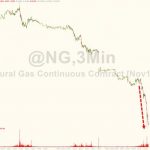OPEC and Non-OPEC sources announced that they have agreed to extend production cut until the end of 2018, but will review the situation in June to make sure that the cuts are not causing larger problems for the Cartel. Worries ranging from them not doing enough or doing too much that will allow shale oil production to flourish and take market share. OPEC is looking for a sweet spot that may not exist as global oil demand has helped OPEC and Non-OPEC start a global oil market tightening that may be out of their control.
When OPEC and Russia started on this oil cut journey last December, the market tried to laugh it off. Many thought the deal was doomed to failure because OPEC had a well-deserved reputation of always cheating on these types of agreement. They incorrectly predicted that the rise in U.S. oil rig counts would lead to a surge in U.S. oil production that match OPEC barrel for barrel adding to the U.S. and global oil glut. On top of that they predicted that Libya, Nigeria and Iran, that had no quota, would collectively raise production more that the other cheating countries would cut. And major reporting agencies like the International Energy Agency was telling us that demand growth prospects were telling us that demand growth would be tepid.
In fact, oil prices reacted to these false beliefs struggling in the fist half of the year before the evidence became more clear that they were categorically wrong. The rally that started in 2016 after prices recovered from the $26 a barrel, double bottom struggled falling to $42 a barrel before the market could no longer ignore the truth.
Low prices sparked a demand surge that may have even been stronger because prices did not adequately price in a stronger global economy. Instead of a weak global economy, you had one where there was no major economy in recession anywhere in the globe.
In fact, the UPI reported that Angel Gurria, the secretary general for the Organization for Economic Cooperation and Development, said global growth is accelerating from 3.1 percent in terms of gross domestic product last year to 3.6 percent in 2017. “Over the past couple of quarters global GDP has been growing even faster than this, at an annualized rate of over 4 percent,” he said in a speech from Paris. “For the first time in 10 years, the pace of growth is such that none of the major world economies is in a recession.” That is why we have seen oil demand in at least a decade and why we have seen U.S. oil supply drain at a record pace and why floating oil storage has halted since the beginning of the year. It is why stocks of oil in the OECD stockpiles have halved and may fall below average in the coming weeks and months.













Leave A Comment